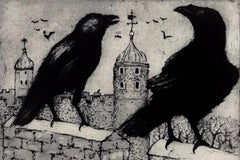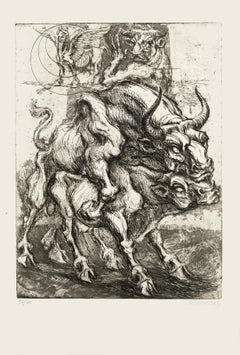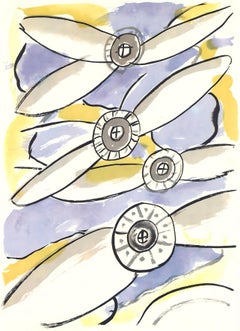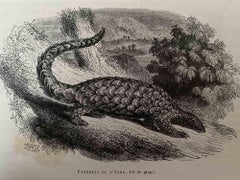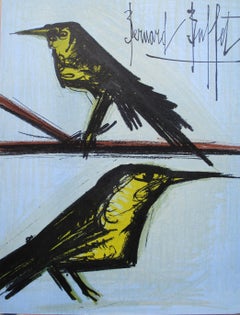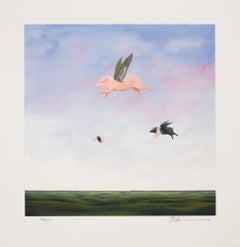Animal Prints and Multiples
21st Century and Contemporary Contemporary Animal Prints
Paper, Etching, Aquatint
Late 20th Century Contemporary Animal Prints
Etching
1970s Modern Landscape Prints
Lithograph
1850s Modern Animal Prints
Lithograph, Paper
1960s Expressionist Landscape Prints
Lithograph
21st Century and Contemporary Contemporary Prints and Multiples
Paper, Lithograph
18th Century Realist Prints and Multiples
Pigment
1770s Modern Figurative Prints
Etching
1840s Animal Prints
Paper
1770s Modern Figurative Prints
Etching
1890s Prints and Multiples
Linen, Paper, Lithograph
1940s Other Art Style Animal Prints
Lithograph
2010s Contemporary Animal Prints
Screen
2010s Contemporary Animal Prints
Etching, Aquatint
1770s Modern Figurative Prints
Etching
1770s Modern Figurative Prints
Etching
1770s Modern Figurative Prints
Etching
1770s Modern Figurative Prints
Etching
1980s Pop Art Animal Prints
Screen
21st Century and Contemporary Contemporary Prints and Multiples
Paper, Lithograph
1970s Animal Prints
Etching, Aquatint
1970s Prints and Multiples
Lithograph
Late 19th Century Naturalistic Animal Prints
Lithograph
Late 18th Century Old Masters Figurative Prints
Etching
1870s Modern Figurative Prints
Woodcut
1970s Contemporary Figurative Prints
Paper, Lithograph
1970s Contemporary Figurative Prints
Paper, Lithograph
1870s Modern Figurative Prints
Woodcut
1870s Modern Figurative Prints
Woodcut
1870s Modern Figurative Prints
Woodcut
1970s Surrealist Animal Prints
Lithograph
20th Century Contemporary Figurative Prints
Etching
1970s Realist Animal Prints
Lithograph
1970s Contemporary Figurative Prints
Etching
18th Century Realist Prints and Multiples
Pigment
1960s Abstract Prints and Multiples
Lithograph
1770s Modern Figurative Prints
Etching
1960s Prints and Multiples
Lithograph
2010s Contemporary Animal Prints
Screen
1870s Modern Figurative Prints
Woodcut
1850s Modern Figurative Prints
Lithograph
1840s Modern Figurative Prints
Etching
1870s Modern Figurative Prints
Woodcut
1870s Modern Figurative Prints
Woodcut
1870s Modern Figurative Prints
Woodcut
1810s Modern Figurative Prints
Etching
1870s Modern Figurative Prints
Woodcut
1980s Folk Art Prints and Multiples
Lithograph
18th Century Figurative Prints
Etching
21st Century and Contemporary Contemporary Prints and Multiples
Screen
1850s Modern Animal Prints
Lithograph, Paper
1850s Modern Animal Prints
Lithograph, Paper
1850s Modern Animal Prints
Lithograph, Paper
1850s Modern Figurative Prints
Lithograph
1850s Modern Animal Prints
Paper, Lithograph
21st Century and Contemporary Contemporary Animal Prints
Screen
1870s Other Art Style Animal Prints
Lithograph
1850s Modern Figurative Prints
Lithograph
1870s Modern Figurative Prints
Woodcut
1850s Modern Animal Prints
Lithograph, Paper
Horse Art Prints, Giraffe Art Prints and Other Unique Animal Wall Art
Shopping for animal prints to spruce up a nursery, living room, bedroom or some other corner of your home?
Decorating with fine art prints — whether they’re figurative prints, abstract prints or another variety — has always been a practical way of bringing a space to life as well as bringing works by an artist you love into your home. And animal prints depict the beauty and power of nature in an elegant way that can complement any room. Interacting with animals has long captured the imagination and has been interpreted in diverse artistic media.
Some of the oldest works of art have included animals, such as a cave painting found in Indonesia dating back more than 45,500 years that shows a wild pig in red ocher pigment. Animals have continued to appear in every era and style of art, from realism to Pop art and everything in between.
Some prints and animal paintings portray animals in their natural habitat, highlighting the majesty of wild creatures roaming the plains, forests and jungles. You might find unique animal prints that feature deer, tigers, wild mustangs, giraffes and other wildlife. Others focus on domestic animals such as dogs — pay a visit to the Museum of the Dog if you don’t believe us — as well as cats and how they interact with the world and their owners.
Picking the right animal painting or animal print for a room — as well as knowing how to arrange your new wall art — can take time. But, in the end, it will tastefully reflect your interests and passions. While an expansive landscape painting helps open up a small space, for example, hanging a horse print in a den shows a love for equine culture and can invite compelling conversation.
For tight corners, select small fine art prints as opposed to the oversized bold piece you’ll hang as a focal point in the dining area. But be careful not to choose something that is too big for your space. And feel free to lean into it if need be — not every work needs picture-hanging hooks. Leaning a larger fine art print against the wall behind a bookcase can add a stylish installation-type dynamic to your living room.
There is animal art to fit every collection on 1stDibs. Explore a wide selection of animal prints in a range of styles to match any home or office.
Read More
Revisiting Robert Rauschenberg’s Creative Rebellion on His 100th Birthday
A planet-wide celebration feels fitting for an artist who saw connections everywhere: between paint and photography, art and life, self and surroundings.
Red Grooms’s 3D Tugboat Is a Chaotic, Comic Take on New York Life
The sculptural lithograph is part of the inimitable artist’s “Ruckus” series, now on view at the Brooklyn Museum.
Joan Mitchell’s Rare, Late-Career Diptych Buzzes with Life
Beneath the inky blackness, the painter’s irrepressible energy electrifies this pair of intaglio prints.
The 1stDibs Guide to Types of Abstract Art
Get to know the key movements and artists who have influenced visual culture for more than a century.
Romare Bearden’s Humanity Infuses His Bright, Bold Art
Through collage, painting and printmaking, the artist foregrounded Black life in America in revolutionary new ways.
Andy Warhol and Suzie Frankfurt’s ‘Wild Raspberries’ Cookbook Is an Artful, Fanciful Delight
This set of recipes and original prints might not make you a better chef. But it will make you smile.
Art Brings the Drama in These Intriguing 1stDibs 50 Spaces
The world’s top designers explain how they display art to elicit the natural (and supernatural) energy of home interiors.
Welcome (Back) to the Wild, Wonderful World of Walasse Ting
Americans are rediscovering the globe-trotting painter and poet, who was connected to all sorts of art movements across a long and varied career.
